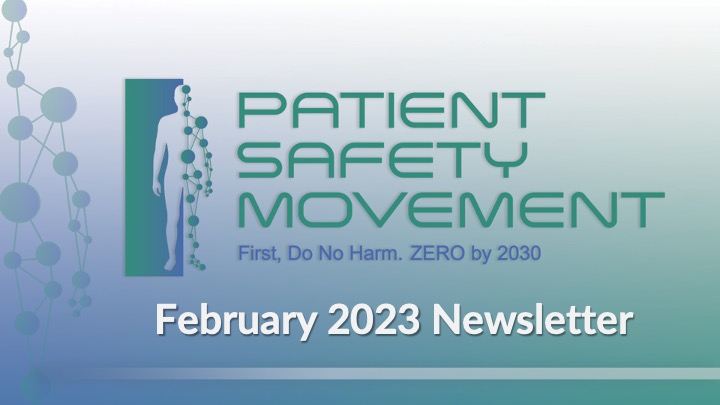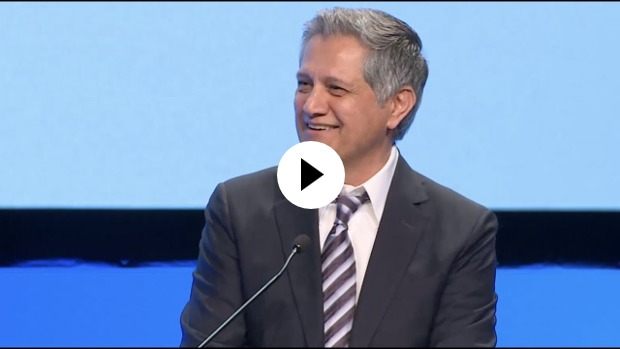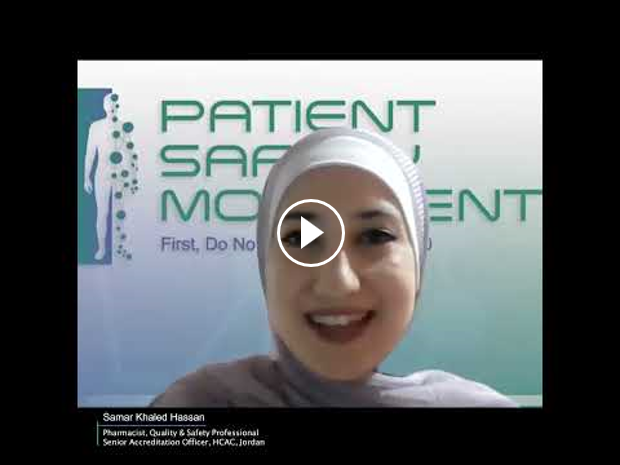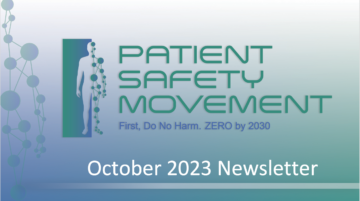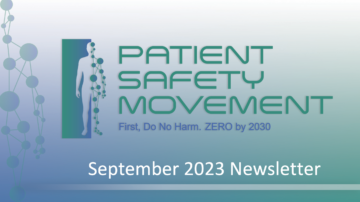Joe Kiani’s Keynote Speech 5th Global Ministerial Summit 2023
Letter from CEO
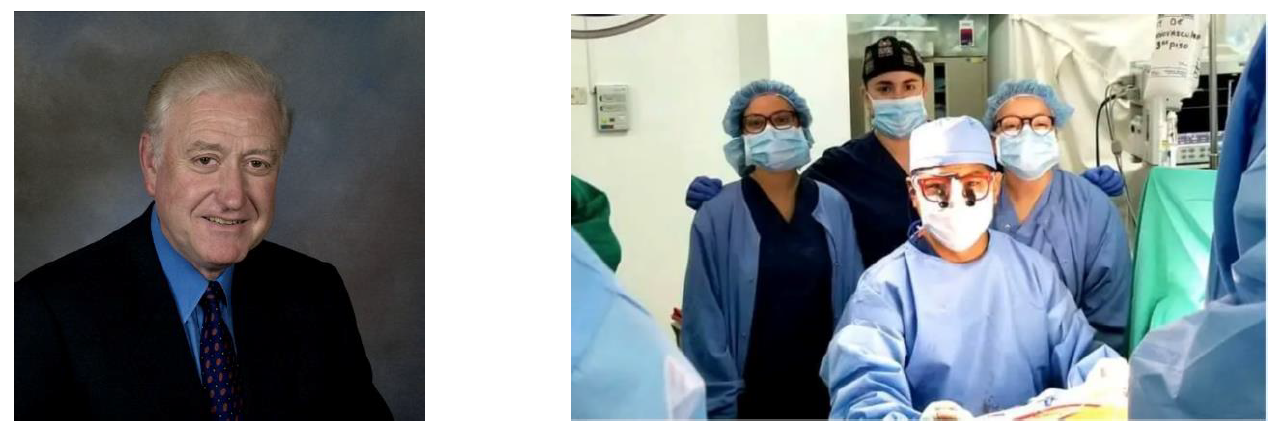
The first week in February is recognized as National Patient Recognition Week which focuses on the patient and patient care. All week, hospital administrators and healthcare professionals take time to focus on what they can do to improve patient care and protect patients from harm. This week emphasizes the vision of the Patient Safety Movement Foundation “Zero Preventable Patient Harm by 2030.”
February is National Cancer Prevention Month and President Biden has this month reignited the “Cancer Moonshot.” This was first launched in 2016 by President Obama, with bipartisan support, after Beau Biden died of brain cancer. The goals are to reduce the death rate from cancer by at least 50% over the next 25 years and improve the experience of people and families living with and surviving cancer and by doing this end cancer as we know it today. Over the last 20 years because of improved diagnosis, therapies, vaccines and lifestyle education, the age-adjusted death rate from cancer, has fallen by about 25%.
President Biden has called on the private sector, foundations, academic institutions, healthcare providers and all Americans to take on this mission of reducing the deadly impact of cancer. All these entities can share actions they plan at whitehouse.gov/cancer moonshot.
American Heart Health Month is also in February and the Patient Safety Movement Foundation would like to recognize the work done in Latin America by a heart surgeon Dr. Aldo Rafael, from Baylor University Medical Center in Dallas. In 2012 Dr. Aldo Rafael founded the “Salvando Corazones” Medical Mission for the Peruvian-American Medical Association. This mission takes a cardiac surgical team from around the DFW area, twice a year, to the Dos de Mayo National Hospital in Lima Peru, to perform open-heart surgeries on underserved, indigenous people from all over Peru. The team has performed more than 120 cardiac procedures, most of them using minimally invasive surgical approaches with excellent results and zero mortality. I had the privilege to join this team for one of these trips. The mission trips are totally reliant on donations of equipment, funds and time from supporters to enable this otherwise unattainable, lifesaving care to the people of Peru free of charge. Dr Raphael has just been named Peruvian of the year by the Foreign Ministry of Peru. If you would like to support this humanitarian effort, please log in to Salvando Corazones – Peruvian American Medical Society. https://www.pams.org
Yours,

Michael A.E. Ramsay, MD, FRCA, Chief Executive Officer, PSMF
Fellowship Spotlight
Save the Date – 2023 Summit
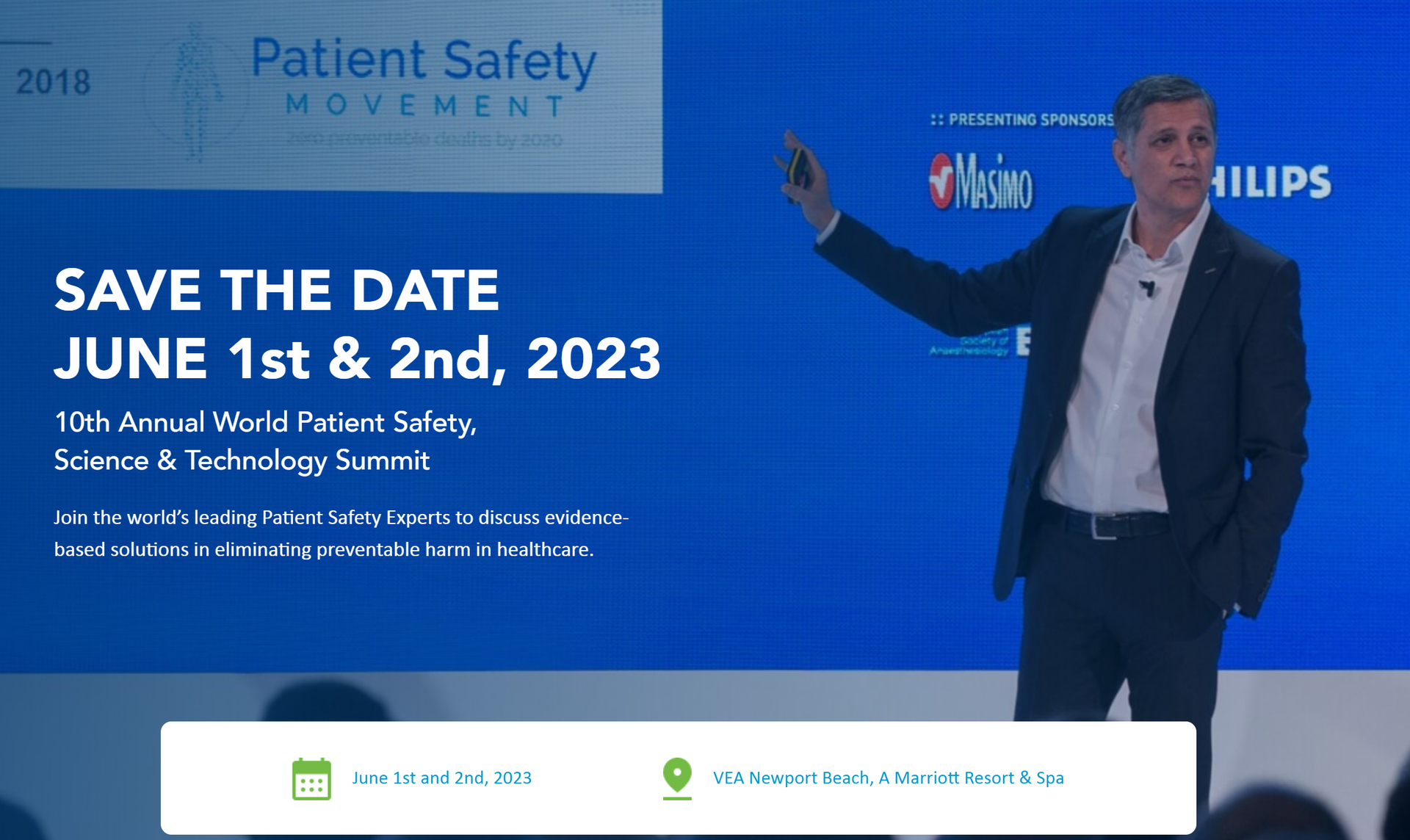
Preventing Emergence Delirium
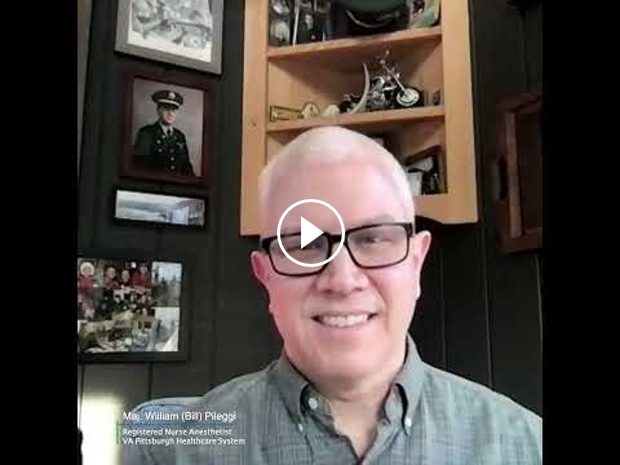
Major William Pileggi, a registered nurse anesthetist, discusses the implementation of the Golden Eagle Project at the VA Pittsburgh Healthcare System to improve outcomes for veterans who may be prone to experiencing post-operative emergent delirium. Through assessments to prescreen for PTSD, staff training, and using alternative drug therapies, his hospital has had zero injury events related to emergent delirium since 2018. With minor modifications, the program is replicable at civilian hospitals.
Chairman’s Column

Letter from Montreux,
‘If it is not safe, it is not care’ Dr. Tedros, Secretary General, WHO
I was lucky enough to be able to attend the 5th Ministerial Global Summit on Patient Safety in Montruex, Switzerland.
This was the first in person Ministerial Summit to be held since 2019. The Global Summit Series was inaugurated in 2016 when it was hosted in London by the UK Government, and has subsequently been held in Bonn, Germany (2017), Tokyo, Japan (2018) and Jeddah, Kingdom of Saudi Arabia (2019). The 2020 Summit was to be held in Montruex but has been held over due to Covid until this year.
Each Summit is hosted by the respective Government and led by the Secretary or Minister of Health for that country. It was planned as an opportunity to bring together political representatives, experts in the field, patient advocates and organizations, health care executive and management leaders as well as bodies representing healthcare professionals and the myriad of relevant industry leaders, to discuss the need for action and implementation of evidence based interventions to prevent and eradicate harm in healthcare.
It is led by a standing membership of the UK, Germany and WHO alongside the hosts from the previous, the current and the subsequent host country. It is now a firm fixture as one, if not the most important global conferences to be held relevant to the safety of patients and healthcare workers. The first Summit brought together eight governments and 150 participants and that has now grown almost exponentially with this year’s Summit was attended by 86 nations and autonomous regions, alongside over 600 participants.
This was a wonderful opportunity to gather together the researchers, experts and leading lights in our field to present their views and those of their colleagues to the relevant political representatives of the day. The fact that so many high level politicians were present was a testament to the efforts of Swiss Federation President, Mr. Alain Berset, and his Department of Health.
They were reminded by our Swiss colleagues and friends, Anthony Staines and Didier Pittet that globally unsafe care is still a leading cause of harm and death in all our systems, that the most unsafe systems are in the low and middle income countries (LMICs) that can least afford it and have the lowest levels of human resource, that greater than 50% of these cases are avoidable and that the cost of current harms and in excess of 3 million deaths now runs into Trillions of dollars.
The Summit was divided into a number of elements with an Expert Day and Ministerial Day, the former outlining key learning from current research and policy developments with particular emphasis on developing sustainable and resilient intervention systems to ensure the adequate implementation of improvement methods and models. A significant degree of learning has taken place because of the Covid Pandemic and this learning needs to be incorporated at every level of our systems. The Global Patient Safety Action Plan has now been adopted by Governments signing up to the World Health Assembly and will provide the platform for national and local organizations to develop their own plans at scale.
The Ministerial Day was led by three remarkable and powerful keynote addresses from The Swiss President, Mr. Alain Berset, by the Director-General of the World Health Organisation, Dr. Tedros Adhanam Gehbreyesus, always known as Dr. Tedros, and our very own Founder, Mr. Joe Kiani! It is impossible to do justice to the oratory of these three speeches but suffice it to say that each made a fantastic impression on all those who were there in person or on-line.
My take aways and in no particular order, were to remind us of the need for active engagement with patients and their families during their care, the need for active transparency and agency of all and for all, the importance of consistent and sustainable collaborations between nations, systems and healthcare professionals, that we have not only an aspiration to succeed but a plan to implement and deliver, and the need to ensure that we have aligned all our efforts and incentives to achieve zero harm in healthcare.
It is rare to have Presidents, Secretaries of Health, Ministers of Health, and Heads of Government Departments in the same room to discuss the needs of their countries but on this occasion to be able to have and to listen to over 80 of them talk so openly and candidly of their needs with regard to the importance of Patient Safety was a truly remarkable occasion. Every nation attending was given the opportunity to outline their message and they all did with honesty and conviction.
As with previous Summits, The Montruex Charter on Patient Safety was agreed by the attending nations. We will aim to share the Charter, Keynote Speeches, and Panel Presentations on the PSMF website as soon as possible. There is already a multitude of information shared on social media for your perusal so please access and share as widely as possible!
The challenge of hosting this major event has now been passed to the next host nation, which for 2024 will be Chile. We must congratulate Chile and our friends SOCCAS, in patient safety there and we will of course be offering them all our support and good wishes for a successful Summit; the first to be held in The Americas and the first in the Global South!!
Yours,

Mike Durkin, OBE, MBBS, FRCA, FRCP, DSC
Innovation Corner
*PSMF does not endorse any specific commercial products or services.*
MANAGING TJA-RELATED CARDIOVASCULAR RISKS
A new book co-authored by Dr. Eric E. Harrison and Dr. Nghia Ho details their techniques for dealing with potential cardiac complications encountered during total joint arthroplasty. Titled Managing Cardiovascular Risk in Elective Total Joint Arthroplasty, the book is written for medical professionals treating these patients, offering innovative approaches to prevent adverse outcomes. It features guidance on how to use anatomical markers from advanced cardiovascular imaging modalities to determine potential high- and low-risk patients.
“Utilizing advanced 3D imaging and echocardiography, we are able to show who is considered safe to undergo orthopedic surgery and who is at risk to have a cardiac event and then proactively treat people that are high risk before their orthopedic surgery.”
INFUSION CARE
MedLite ID Smart-Lites are a simple-to-use, disposable solution assisting clinicians to accurately and efficiently identify the Saline Safe infusion line in all light settings. The Saline Safe Line, often called the Primary Med Line, is used for intermittent medications, electrolytes, and antibiotics. Any patient with four or more IV lines and the potential for an infusion Adverse Drug Event (ADE), can benefit from the MedLite ID solution. With 56% of Adverse Drug Events being infusion-related, a compounding 3% error rate for every IV line after the first, and 15% of infusion ADE being “wrong route errors”, MedLite ID can help. MedLite ID smart-lites create a standard-of-care visual identifier of the Safe Line in seconds, protecting the patient and caregiver throughout the inter-departmental patient-care journey for all shifts, in all lighting conditions, and with no change to workflow. MedLite ID reduces infusion Adverse Drug Events to near-zero, can provide access to the Safe Line medication port in less than 10 seconds, and reduces exposure to infectious diseases such as MRSA or Covid-19.
In the News
- A Los Angeles healthcare system is using artificial intelligence to turn around statistics on patient safety while improving the bottom line, according to
Healthcare Finance. - ProPublica published a story about a patient who upon being denied coverage by UnitedHealthcare for his ulcerative colitis fought back and exposed the insurer’s hidden procedures for rejecting claims.
- KTLA News in Los Angeles reported on a 24-year-old woman who died of an accidental fentanyl overdose days after entering a Riverside drug rehab clinic. The clinic, which allegedly failed to follow proper monitoring protocols, has since lost its state license.
- MSNBC Anchor Yasmin Vossoughian was rushed to the hospital with a serious heart condition on New Years Eve, the day after being misdiagnosed with acid reflux during a previous urgent care
visit, according to a story published on Insider.com. - A San Diego sailing icon has filed a lawsuit over a botched cataract surgery that left him blind in both eyes, possibly caused by an infection from dirty instruments or polluted eyewash,
as reported by CBS 8 News. - Mark F. Guilfoyle, a diagnostic radiologist who was disciplined in seven states for medical errors and misdiagnoses, is still practicing medicine in Michigan according to a report in USA Today.
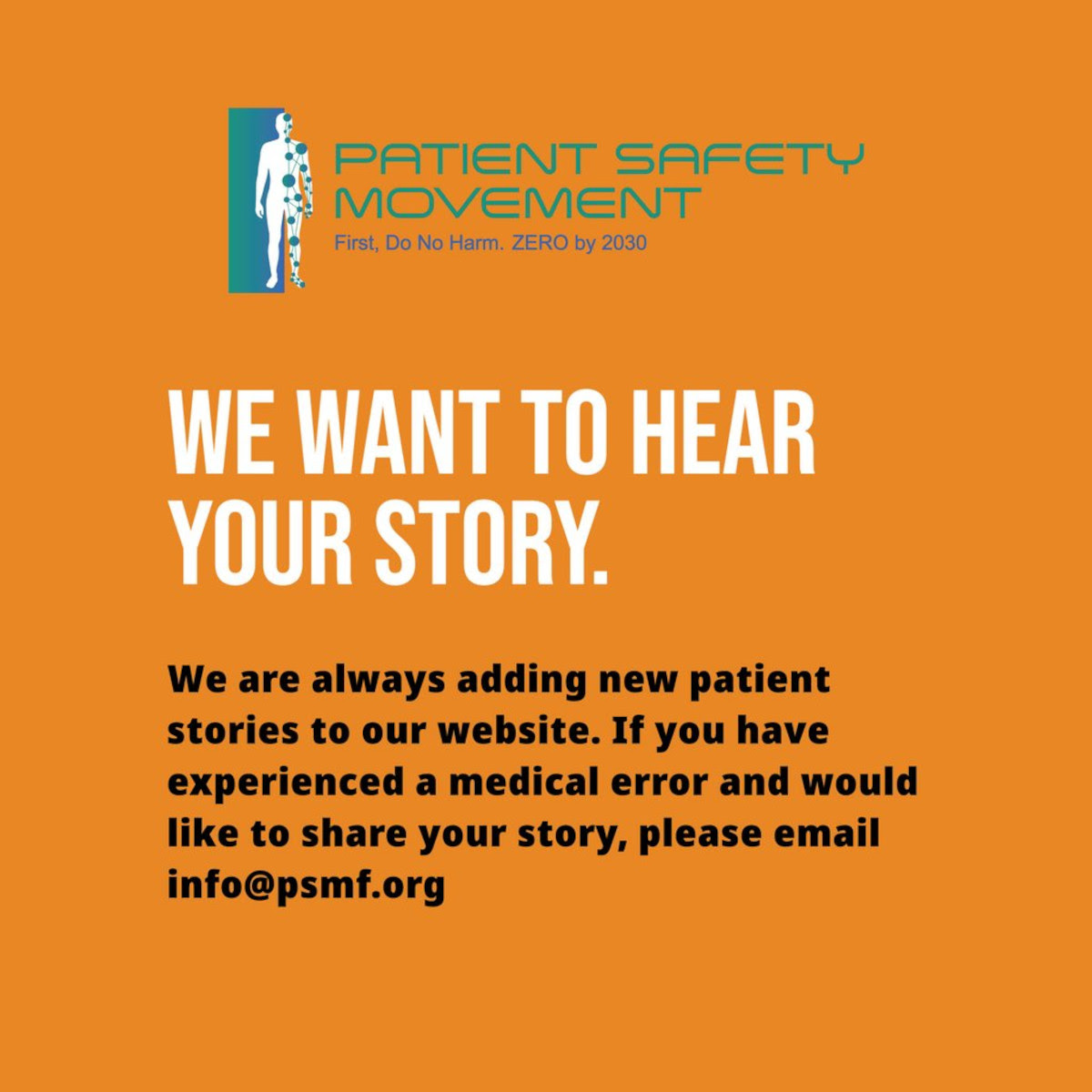
DONOR TESTIMONIALS — WHY I GIVE
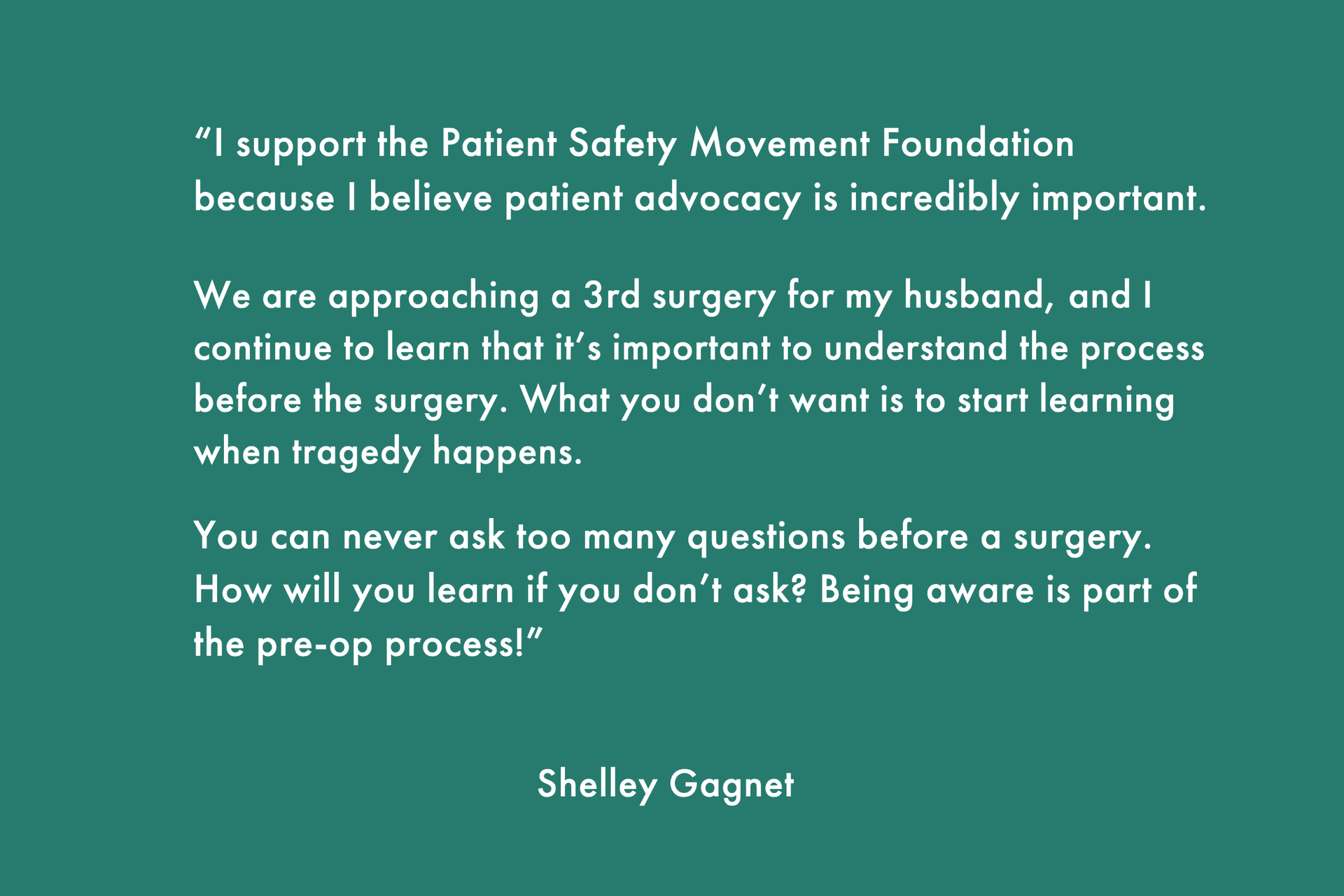
GOVERNANCE BOARD
Mike Durkin, OBE, MBBS, FRCA, FRCP, DSC, Chairman of PSMF, Senior advisor on Patient Safety Policy and Leadership, Institute of Global Health Innovation, Imperial College London
Steven J. Barker, PhD, MD, Chief Science Officer, Masimo Corporation, Professor Emeritus of Anesthesiology, University of Arizona Health Sciences
Robin Betts, RN, CPHQ, MBA-HA, Vice Chair, PSMF, Vice President, Safety Quality & Regulatory Services, Kaiser Foundation Hospitals and Health Plan, Kaiser Permanente Northern California
Alicia Cole, Patient Safety Consultant
Javier T. Davila, MD, MFS, Ambassador, PSMF in Mexico, Former Medical Director, Mexican Social Security Institute, Head of Medical Education, Research and Health Public Policy
Omar Ishrak, PhD, Executive Chairman and Chairman of the Board of Directors, Medtronic, Chairman of the Board of Directors, Intel
Philip D. Lumb, MB, BS, MD, MCCM, FCCP, Professor of Anesthesiology and Trauma Surgery, Keck School of Medicine at University of Southern California
Joe Kiani, Founder and Immediate Past Chairman of PSMF, Founder, Chairman & CEO of Masimo
Sarah Kiani, Director, Masimo Foundation for Ethics, Innovation, and Competition
David B. Mayer, MD, Executive Director, MedStar Institute for Quality and Safety
Jannicke Mellin-Olsen, MD, DPH, Past President, World Federation of Societies of Anesthesiologists
Jim Messina, CEO, The Messina Group
Najmedin Meshkati, Ph.D, MS, Professor of Civil/Environmental Engineering, University of Southern California
Charlie Miceli, CPM, Treasurer, PSMF, Chief Supply Chain Officer, Network VP of University of Vermont Health Network
Michael A.E. Ramsay, MD, FRCA, Chief Executive Officer, PSMF
Abbasseh Towfigh, MPD, Executive Director and Secretary, Ayeneh Foundation
Vonda Vaden Bates, Patient Advocate, CEO, 10th Dot
OUR STORY
 In 2012, Joe Kiani founded the nonprofit Patient Safety Movement Foundation (PSMF) to eliminate preventable medical errors in hospitals. His team worked with patient safety experts from around the world to create Actionable Evidence-Based Practices (AEBP) that address the top challenges. The AEBP is available without charge to hospitals online.
In 2012, Joe Kiani founded the nonprofit Patient Safety Movement Foundation (PSMF) to eliminate preventable medical errors in hospitals. His team worked with patient safety experts from around the world to create Actionable Evidence-Based Practices (AEBP) that address the top challenges. The AEBP is available without charge to hospitals online.
Hospitals are encouraged to make a formal commitment to ZERO preventable deaths, and healthcare technology companies are asked to sign the Open Data Pledge to share their data so that predictive algorithms that can identify errors before they become fatal can be developed. The Foundation’s annual World Patient Safety, Science & Technology Summit brings together all stakeholders, including patients, healthcare providers, medical technology companies, government employers, and private payers. The PSMF was established through the support of the Masimo Foundation for Ethics, Innovation, and Competition in Healthcare. For more information, please visit psmf.org.

